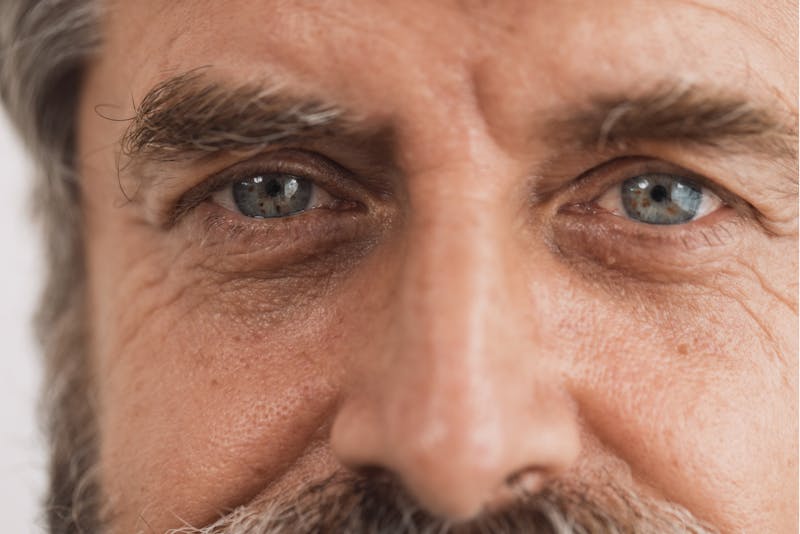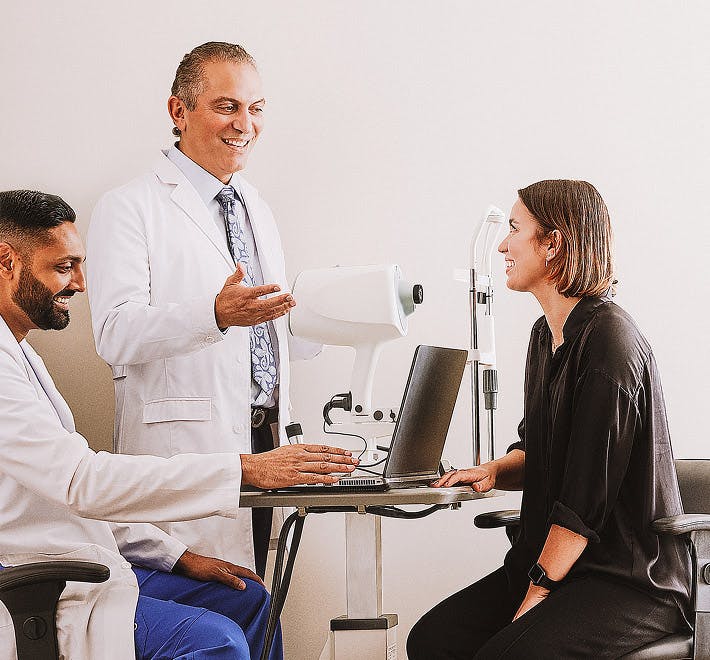Enhancing Your Vision
Guiding you toward the procedure that fits your unique needs, so you can see the world clearly and confidently.

Thinking about cataract surgery—or already had it? Most people enjoy crisp, glasses-free vision. Yet a real fear lingers: What if I end up with glare, halos, or blur that glasses can’t fix? The good news: for many patients, there’s a straightforward, predictable way to diagnose and fix the cause, often without replacing the lens.
A 65-year-old gentleman flew in about a year after cataract surgery with a multifocal lens. His right eye measured 20/40, and no glasses helped. Night driving felt dangerous from intense glare and halos. A retinal scan showed a healthy macula. One surgeon told him to wait; another suggested lens exchange—but warned he would lose near vision.
Before any surgery, we performed a hard contact lens test. This rigid lens sits atop a thin layer of tears to create a temporarily perfect, smooth surface. His vision snapped into focus—proof the problem was the corneal surface, not the implant.
Instead of exchanging the lens, we treated the surface with Topography-Guided PRK, a personalized laser that polishes microscopic hills and valleys on the cornea. He healed to 20/20, night glare and halos gone, and he kept the near-vision benefits of his multifocal lens.
Multifocal intraocular lenses split incoming light to give distance and near focus at the same time. Because light is divided, the system is more sensitive to even small surface roughness (higher-order aberrations). Smooth the surface, and you usually smooth the symptoms. Learn more about multifocal options here.
Think of the rigid lens as a glass-smooth cap over a bumpy road. If your vision becomes clear with the lens on, the culprit is the front window of the eye (the cornea), not the implant or retina. This single test helps us avoid unnecessary surgery and pick the right fix first.
Topography is a high-resolution, 3D map of your cornea. With Topography-Guided PRK (TG-PRK) or Topography-Guided LASIK (TG-LASIK), we use that map to gently reshape the surface so light focuses cleanly again.
A 2020 Scientific Reports study evaluated topography-guided LASIK after multifocal IOL implantation and found improved visual quality with reductions in corneal irregularities—evidence that mapping and smoothing the cornea can reduce glare and halos without lens exchange. (Nature)
Not necessarily. Lens exchange can help in select cases, but it is bigger surgery and may cost you near vision. When the hard contact lens test is positive, TG-PRK or TG-LASIK usually targets the true source. If exchange is still needed, review your options here.
Watch Dr. Cohen's Video about glare and halos after cataract surgery.
If glare, halos, or blur are limiting your life after cataract surgery—or you’re planning surgery and want to avoid these issues—schedule an evaluation with our team. Start here: Contact Cohen Eye Institute or explore Premium Cataract Surgery.
Individual results vary. A comprehensive exam is required to determine candidacy and the best treatment plan for your eyes.
Guiding you toward the procedure that fits your unique needs, so you can see the world clearly and confidently.




If you do not see your preferred date and time please call the office, so we can accommodate your request (917) 398-4011.